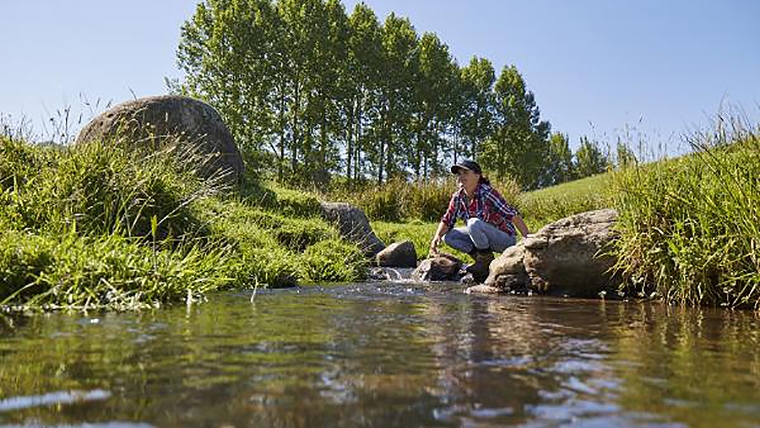
Mark Chrystall farms around two and a half thousand hectares in the Rangitīkei. He farms under the banner of Spring Farms. And his company leases all the land from the land-owning entities he and his partners control. They have gone from roughly 9000 stock to 27,000 stock units in a short period of time.
This business farms 12,000 ewes and finish all of their progeny as well as roughly around 600 breeding cows, including first calving heifers. They are also involved with the Alliance "hand-picked program" which is a program by its very definition, aiming to deliver the finest lamb and beef created and selected from New Zealand farms. The selection criteria may be based upon region, season or breed. Whatever the basis for a particular product, their aim is to curate and hand-select for exceedingly high quality and consistency.
“We have been part of this program for a number of years and have been buying solely black bulls now for five or six years. We certainly want an animal that is hardy and can handle our hills, has good conformation and can last with a low mature cow weight. So we're certainly focused and still trying to bring that intermuscular fat figure in as well.”
While the commercial components to the Spring Farms business are of high importance, so to are the environmental and social protection of their community. Catchment groups are providing that balance for them. He is involved in a local catchment which is part of a wider group which feeds into what they call the Rangitīkei Rivers Community Catchment.
“We've had a really cool journey with it as well actually, and that started around three years ago, and is about 700,000 hectares in the wider Rangitīkei and we've probably at this stage got, we feel sort of 65% maybe slightly higher, close to 70% of the whole Rangitīkei under active community catchments. We have roughly around 300 paid up members. We started at the top end of the Rangitīkei area and have slowly moved our way south. I think we have 20 catchment groups that are operating now that are operating within the Rangitīkei Rivers Community Catchment framework,” says Chrystall.
“Each subgroup has their own vision and we've taken them through a vision and goals exercise which has been done with an outside consultant. So every catchment is quite different as far as that goes, so we don't want to sit any grandiose goals is from our Rangitīkei Rivers Community Catchment perspective, we are really wanting the catchments to design that their own catchment around what they needed. And then we've got the funds through a good support structure with MPI, to be able to help facilitate those. So we have three full time employees, our catchment coordinators that we've got, who do a wonderful job, and helping drive some of those extension services and things within the catchments.”
Chrystall says they are conscious as farmers that they need to get ahead of where regulation and compliance is heading. “If we really want to do anything in the sheep and beef sector, we believe we need to really own our own destiny. Integrated farm planning that's coming in which were really involved in so what we're doing is rolling out a whole heap of seminars within and the area and the wider area around intensive winter grazing.”
And of course there are wider social benefits to these catchment groups. Water of course is very topical at the moment, but there's a wide range of reasons around why we need community catchments. Chrystall says they have been really careful around how they have designed their boundaries around community catchments, so they are not making them necessarily straight watershed.
The 'community heartbeat' is being strengthened and catchment groups are being cantered around community halls for example that the group frequent quite regularly. There is another hall a bit further south which is where they have set the boundary to that catchment group. These halls are once again being utilised by the community. Some farmers in the area have not been inside theise local assets for 15 years, and catchment groups are playing an integral role in galvanising communities have a really a good part to play and, and just bringing communities back together, and sharing a common vison of prosperous and sustainable communities.
Anyone wanting to be part of the solution in terms of improving water quality should join a catchment group and get involved. You will also be part of maintaining and growing the heartbeat of this nation – which is our rural communities.
Listen above to hear the full story
P2 Steer
Select chart tabs
Angus Kebbell is the Producer at Tailwind Media. You can contact him here.

We welcome your comments below. If you are not already registered, please register to comment.
Remember we welcome robust, respectful and insightful debate. We don't welcome abusive or defamatory comments and will de-register those repeatedly making such comments. Our current comment policy is here.